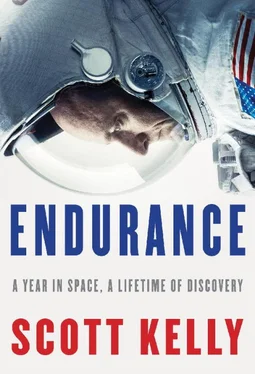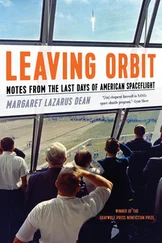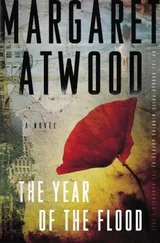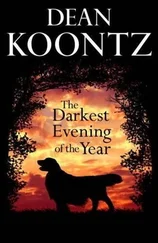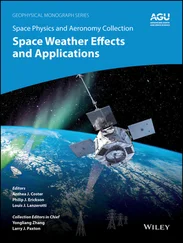The next day, I’m floating down to the service module to talk to the cosmonauts when I find Aidyn in the passageway between the Russian and U.S. segments, wedged into a crevice between some hardware stowed on the floor, reading a Russian car magazine. I grab him and say, “Come with me.”
I lead him down to the Cupola and show him how to open and close the window shutters.
“You’re more than welcome to come down and hang out in here anytime,” I tell him. This is a view he would only have a very limited chance to enjoy.
Unlike Aidyn, Andy is very busy. The European Space Agency has sent many science experiments with him. I feel bad for him, because he is spending most of his time on his own in the European Columbus module, which is windowless. I check in with him often to see if he needs any help, and he always seems to be doing well. When Andy isn’t working, he can often be found hanging out with us, watching TV or chatting. I encourage him to spend time looking out the window, but I get the sense he wants to be part of the crew just as much as he wants to enjoy the view. I want to say that he’s only up here for ten days, so he should be spending all of his free time with his face pressed to the window, but I don’t want to tell him what to do. On a ten-day shuttle mission, everyone would be hanging by the windows as much as possible, oohing and aahing.
As much as I enjoy having new faces up here, we definitely feel the strain of having such a full house. With NASA’s permission, Sergey sleeps in the U.S. airlock. Without asking permission from the Japanese space agency, I let Andy sleep in their module, since I don’t want him to have to spend all his time in the windowless Columbus module. Aidyn sleeps in the habitation module of the Soyuz they will be going home on.
Near the end of Andy’s ten-day stay, he remarks, “Boy, do I need a vacation.”
“You know what?” I say. “You’re complaining to the wrong guy.”
He gets it and laughs at himself.
A few days later, I give myself a flu shot, the first one administered in space. We are safe from infectious illness up here, so the shot isn’t to protect me; instead it’s part of the Twins Study comparing Mark and me. He will be injected with the same serum at the same time—in fact, he insists on injecting himself as well—and then our immunological responses will be compared. When we both tweet about our flu shots, the response is surprising. I even get retweeted by the Centers for Disease Control and the National Institutes of Health. Just the fact that I injected myself seems to be the subject of fascination. I’m learning that sometimes it’s the more mundane aspects of life in space that capture the public’s attention the most.
On September 12, we gather to see off the short-duration crew. As always, I find it strange to say good-bye to people leaving space. The bond we form up here, a bond of shared hardship, risk, and extraordinary experiences, is powerful. Gennady has prepared the Soyuz, and the crew is suited up in the underwear that go with their Sokol suits. We set up the cameras for the ground to watch as we gather in the service module, then make conversation as we wait awkwardly for the clock to tick down. When it’s finally time for them to float through the hatch into the Soyuz, I hug each of them good-bye, especially Gennady. I tell him how much I’m going to miss him. When they are all in the Soyuz, I float in after them and joke that I’m going to stow away. “I’m done, guys. I’ve decided I’m going back with you!” Everyone laughs as I float back into the station.
We close the hatch, and a couple of hours later they are gone.
Three days later, I hit the halfway point of my mission.
14

AS MY LIFE was returning to normal following my first spaceflight, in early 2000, I also had a moment to take stock of where I was in my career. What would come next? I had been working for most of my life to become one of the few people who get to travel in space, and now I had done it. I had performed well, our mission had been a success, we had come back safely, and I couldn’t wait to go up again. But I didn’t know when that would be.
One of my crewmates on the mission I had just finished, Mike Foale, had flown a mission on Mir, so he spoke Russian and was well connected within the Russian space agency. He was also an associate administrator of the Johnson Space Center and was close with the center’s director, George Abbey, so he had influence with him. Soon after we came back from our mission, NASA was looking for a new director of operations (DOR)—an astronaut who lived in Star City, just outside Moscow, and served as a liaison between the two space agencies. The DOR dealt with the details of training American astronauts to fly on Russian spacecraft and served as the on-site leader for the U.S. astronauts training there. The International Space Station was still in the early stages of construction, and we were ramping up to train international crews in Houston and Star City, as well as in Europe and Japan. Mike said that Mr. Abbey wanted me to serve as DOR. I was flattered, but I was reluctant to take the job. I thought of myself as a shuttle astronaut, a pilot, not a space station guy. I remarked to my brother in private that I didn’t want to get that space station stink on me, thinking it would be hard to get off, resulting in fewer shuttle flights.
Still, when I was offered the job, I accepted it. My approach to an unwanted assignment had always been to express my misgivings and my preferences, but then if I was still asked to take the hard job, I did my best to make it a success. I was to start just a few months later.
Mike flew with me to Russia the first time to help me get acclimated. We were met at the airport by a Russian driver named Ephim, a squat, gruff bull of a man. I would later learn that Ephim would do anything to protect us and our families, even physically if required, and he cooked a great shashlik, Russian barbecue. Ephim loaded us into a Chevy Astro van, one of the few Western vehicles in Russia at the time, and I watched Moscow go by as we passed through the city. The snow was piled high, and the car exhaust and other pollutants had stained it dark. As we traveled northeast from Moscow, past old Russian cottage-style houses with their ornate trim and elaborately shingled roofs, the snow gradually turned white. Soon we were passing through the gates of Star City.
Down a narrow path lined with thick birch trees, past old Soviet-style cinder-block apartment buildings and the giant statue of Gagarin holding flowers behind his back and leaning forward welcomingly, we arrived at the awkward row of Western-style town houses built for NASA we called “the cottages.” It was Friday night, so after dropping our bags we went straight to Shep’s Bar, actually just the remodeled basement of Cottage 3. The place was named for Bill Shepherd, a NASA veteran of three space shuttle flights who was now in Star City training to become the first commander of the International Space Station. He was also a former Navy SEAL who was legendary for saying in his astronaut interview, when asked what he could do better than anyone else in the room, “Kill people with my knife.” Bill had a penchant for putting people under the table in a drinking game called liar’s dice, and my first night in Russia I was expected to participate. I wasn’t one to argue, and I even had a slight advantage over the others in that I had played the game in my fighter pilot days. Shep had no mercy on us newcomers, though, and I watched as some scientist astronauts who were in Russia for the first time fell out one by one. Shep didn’t need a knife to kill; he could also kill with dice.
Читать дальше
